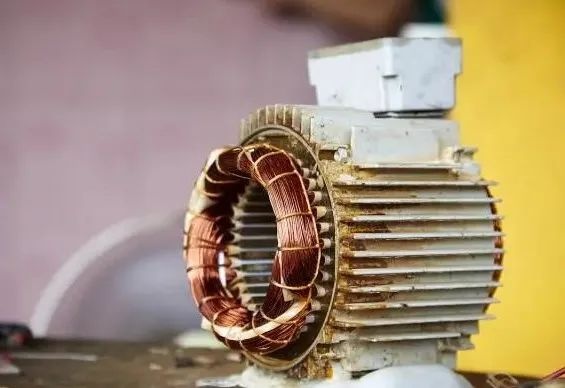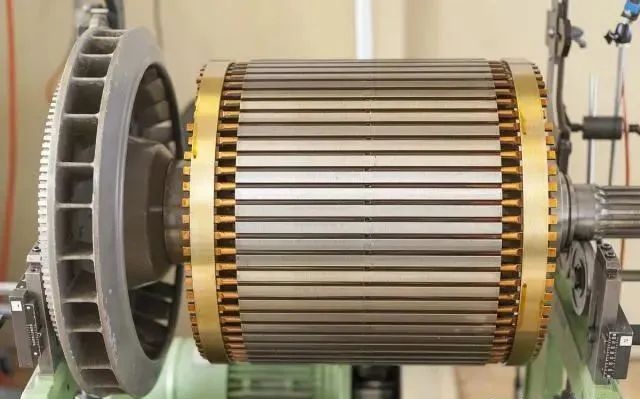What is the starting method and working principle of a synchronous motor?
What is the starting method and working principle of a synchronous motor? In which fields is it apply?
A motor is an electromechanical device that converts electrical energy into mechanical energy. It is divided into single-phase and three-phase motors according to the type of input. The most common three-phase motors are synchronous motors and induction motors. When three-phase electrical conductors are placed in a specific geometric position (i.e. at a certain angle to each other), an electric field is created, and the rotating magnetic field rotates at a certain speed, called synchronous speed. If there is an electromagnet in this rotating magnetic field, the electromagnet will be magnetically locked by this rotating magnetic field and rotate at the same speed as the rotating magnetic field. Since the speed of the motor rotor is the same as the speed of the rotating magnetic field, this is where the term synchronous motor comes from.

The rotation of the synchronous motor is completely proportional to the frequency of the inverter. Because of its high efficiency and energy saving, the rotor embedded permanent magnet motor is widely used in the industry. The motor consists of a stator (static side) and a rotor (rotating side). The stator has a three-phase The three-phase rotating magnetic field (Ns=120f/p) generated by the winding is the same as that of the induction motor. This relationship can use N and S to simulate the magnetic poles rotating on the outside and the n and s magnetic poles of the rotor. When the N and S poles on the stator side rotate, the n and s magnetic poles are attracted and rotate at the same speed.
The reason for not using commercial power directly, if the power is turned on with the motor stopped, the magnetic poles (N and S poles) on the rotor side and stator side cannot be specified, which will cause the motor to lose synchronization, resulting in improper operation. Therefore, when starting a synchronous motor, the inverter first operates by looking for the magnetic poles on the rotor side and the stator side.
Main features of synchronous motors
Synchronous motors cannot be self-starting, they need some external means to make their speed close to synchronous speed, for constant power frequency, regardless of the load condition, their running speed is synchronized with the power frequency, and it behaves as a constant speed motor, this kind of motor has in The unique characteristics of working at any electrical power factor make it used to improve electrical power factor. A synchronous motor is a dual-excited motor, that is, it provides two electrical inputs, and its stator windings are provided with three-phase power from a WE to the three-phase stator windings, and DC to the rotor windings.

The three-phase stator winding with three-phase current produces three-phase rotating magnetic flux, and the rotor with DC power supply also generates constant magnetic flux, considering the power frequency of 50 Hz, the three-phase rotating magnetic flux rotates about 3000 revolutions in 1 minute, Or spin about 50 turns in 1 second. At one particular moment, the poles of the rotor and stator may have the same polarity (NN or SS), creating a repulsive force on the rotor, and at the next moment, it will be NS, creating an attractive force. Due to the inertia of the rotor, it cannot rotate in any direction, the rotor remains stationary due to attractive or repulsive forces, so a synchronous motor is not self-starting.
We use some mechanical means to rotate the initial rotor state in the same direction as the magnetic field, so that its speed is very close to synchronous speed, when synchronous speed is reached, magnetic locking occurs, and the synchronous motor continues even after removing the external mechanical device rotate.
How to start a synchronous motor
A synchronous motor is mechanically coupled to another motor, it can be a three-phase induction motor or a DC shunt motor, it rotates at a speed very close to the synchronous speed, give it a DC excitation, when the magnetic locking occurs for a period of time, the external motor's Power is cut off.
In this case, the synchronous motor is a salient-pole type, and the additional winding is placed on the rotor pole face. When the rotor is not rotating, the relative speed between the damping winding and the rotating air gap flux is large, resulting in the required starting torque. When the speed is close to the synchronous speed, the induced EMF and torque will decrease, and finally when the magnetic lock occurs, the torque will also decrease to zero. Therefore, in this case, the synchronous motor first operates as a three-phase induction motor using additional windings, and is finally synchronized to the frequency.
Applications of Synchronous Motors
Due to its good performance at any electrical power factor, in order to improve the power factor, a no-load connection to a synchronous motor is used, so it is used in power systems where static capacitors are expensive.
Applied to synchronous power, it is suitable for occasions where the running speed is low (about 500 rpm) and high power is required. For power requirements of 35kw to 2500kw, the size, weight and cost of the corresponding three-phase asynchronous motor are very high. Therefore, it is better to use these motors, such as reciprocating pumps, compressors, rolling mills, etc.



























 XINDA
XINDA